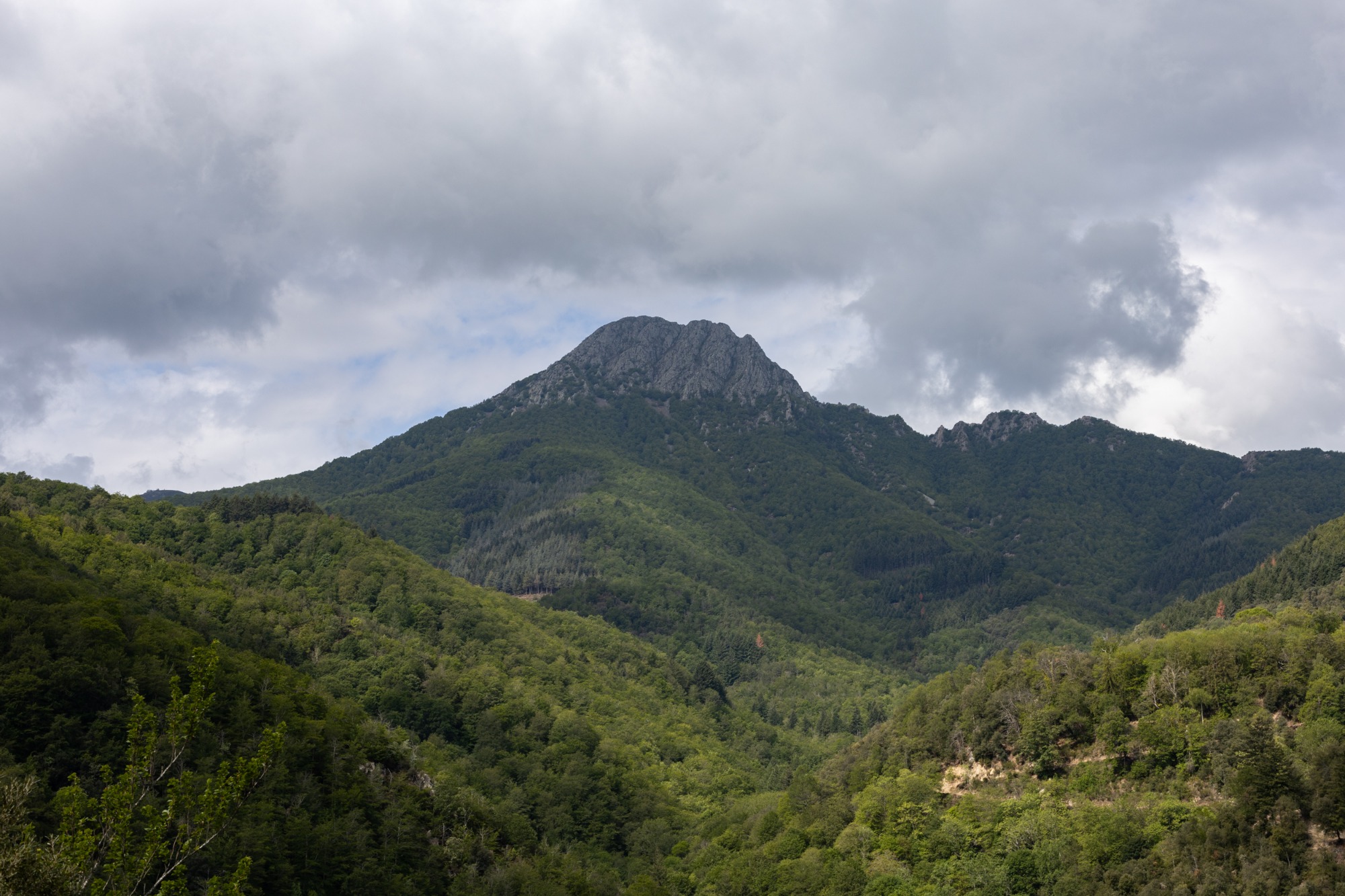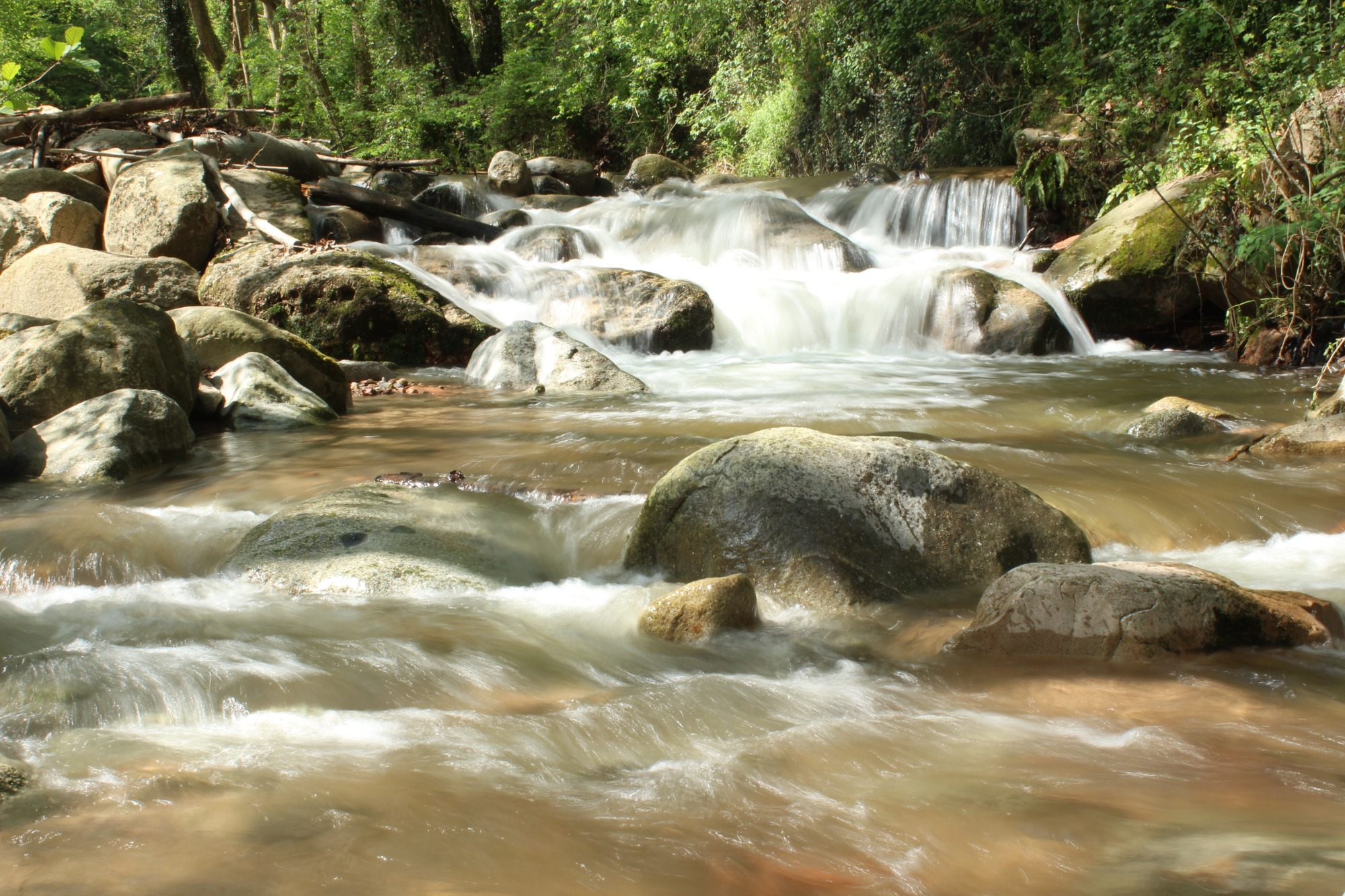LOCAL PRODUCTS
Native olive oil
Arbúcies also has native olive oil. You can find it in several shops in Arbúcies under the name of Ova and Salar.
Ova produces quality extra virgin oils made with the ancient varieties of our land. The brand was born at the foot of Montseny thanks to a group of 25 people to cover the high demand for quality oil at an affordable price. If you buy Ova's oil, you will be helping and collaborating in the preservation of indigenous varieties.
Salar is a variety of oil obtained from olives grown in the Valley of Arbúcies with a cultivation of more than two thousand years. While the olive trees were used for oil production, those of the Salar variety were destined to become table olives. Hundred of years later, a small change in the genes made it possible to improve the quality of the oil and the selection of the olive called "Salar d'Arbúcies" was created.
Apple varieties
Arbúcies preserves more than 40 apple varieties thanks to an Arbúcies resident, Emili Soms, who has dedicated himself to recovering and preserving apple varieties from the past that are not currently commercialized.
The corgelada, otherwise know as the frozen apple, is a variety of apple originating from the Arbúcies Valley and one of the varieties preserved in the private orchard of Emili. This apple enjoyed its gretest period of commercial cultivation during de 20th century, when the area was known as "the apple valley". It is an apple that grows in the autumn months. It has an elongated round shape, with a thin skin and is reddish green in colour.
This species has this name due to its white interior with vitrifications, that are concentration of sugar in certain areas, that give an appearance of transparency, as if the apple was frozen. It has a strong texture and a sweet taste.
Crochet beans
As for the crochet bean, they are white beans with a curled shape, very crocheted and flat. Another characteristic is its rough skin, which once cooked is very thin.
It can be eaten hot or cold, just with a drizzle of oil is enough.
CREEK OF ARBÚCIES
The springs, streams, streams, irrigations... They are fundamental and emblematic elements that invite you to walk and enjoy our environment.
To discover this rich heritage we recommend enjoying the Passeig de la Riera route that starts at the ethnological museum of the Montseny. Throughout its route we always walk along the stream, through a shady walk through the riverside trees, to combine the natural beauty that it offers us.
Along its route we will find indicators of other routes that will allow us to know more about the town of Arbúcies, such as the Santiago Rusiñol itinerary, about the artist who painted the landscape of the Arbúcies stream.
MONTSENY'S NATURAL PARK

Declared a Biosphere Reserve by UNESCO, it is a protected natural area with a variety of landscapes that offer remarkable biodiversity, from lush forests to mountainous parts and peaks. Ideal destination for nature lovers and hikers.
The Arbúcies Valley is located in the middle of the Montseny and Guilleries Natural Park. This location makes you enjoy a great diversity of flora and fauna, with Mediterranean and Central European landscapes. We can discover the beauty of these places by walking along the banks of the stream and the pointed routes that will take us to points of interest such as Montsoriu Castle, Santa Fe, Sant Pere Desplà, Santa Maria de Lliors, Joanet, Sant Marçal and even to crown the top of the Agudes. A good sample of the flora and fauna of the valley, we find it in the same urban center where there are several parks and gardens to walk or spend some time resting.
The Montseny massif is a Natural Park and World Biosphere Reserve. It is crowned by peaks such as the hill of Man (1,706 meters) or the Matagalls (1,697 meters), and houses a very rich natural and cultural heritage.
It is formed by the ridge of the hill of Man (1,706 meters), the Agudes (1,703 meters), the Matagalls (1,697 meters) and the plain of Calma (puig Drau, 1,344 meters). It is crossed by the Congost, Tordera and Major streams. A combination that makes the vegetation very rich and has a very abundant fauna.
The cultural heritage includes the megalithic constructions of the Ark mountain range, the Roman villa of Can Terrers, the many medieval churches, the numerous castles, the fortified farmhouses of Bellver or the Sala, the set of the Tagamanent and the hermitage of Sant Segimon.
The beauty and diversity of the landscapes of the Montseny Massif Natural Park have inspired numerous artists, writers and intellectuals, and each year attracts about two million visitors.
THE "GUILLERIES"
Mountain range that offers a rich and varied natural environment with forests, streams and mountainous landscapes.
The undulating relief of the Guilleries massif draws a natural region that has preserved its culture and particularities over time. We are a territory with roots, linked to the environment, that we enjoy our own lifestyle. You have a lot to see.
It is a mountainous massif located at the extreme North East of the Catalan Pre-Coastal Range, crossed by the Ter, distributed between the regions of Osona and La Selva. The maximum altitude is that of Sant Miquel de Solterra (popularly Sant Miquels de les ants) of 1,204 m, and the lower ones, in the lower valleys, around 300, but most of the heights range from 800 to 1,000 m.
The capital of this natural region is Sant Hilari Sacalm. From a geological point of view it is an ancient massif of Paleozoic age, formed mainly by granite and schisty materials, which have conditioned the modeling of the relief. The presence of the gneissos of Les Guilleries, the only place in the Catalan mountain range where they appear, should be highlighted. Below the extensive plateaus of the massif, a series of slight undulations and rounded peaks are formed with a very characteristic relief.
At the level of vegetation is a massif populated with mountain holm oaks (Quercus ilex) and some cork oaks (Quercus suber) on the sunny slopes and deciduous species such as oaks, beech (Fagus sylvatica) and chestnut trees on the shadiest slopes.
Currently they also coexist with species of conifers that are used as a forest resource. With this rich plant mosaic, the presence of fauna is also very varied; it often comes from the fox, or the guilla, from which the toponym of the massif is said to come. There are also other carnivores such as the Musk cat, the beech, the badger and the otter. The wild boar is also ubiquitous throughout the massif and raids are organized to hunt it.
Les Guilleries, precisely because of its mountainous and wild character, have been an inhospitable and unknown space for many years. A good number of stories and legends have arisen from this; Also characters who with this wild character of Guilleries have been recognized throughout the country, such as Joan de Serrallonga (17th century), the most renowned bandit in Catalonia, and become myth for literature and popular culture or, General Josep Moragues, hero and martyr of Catalonia who with his bravery became a fighter.
